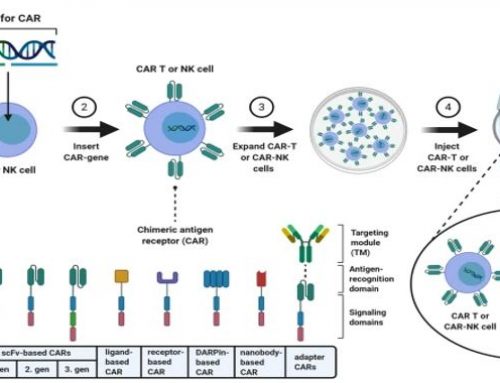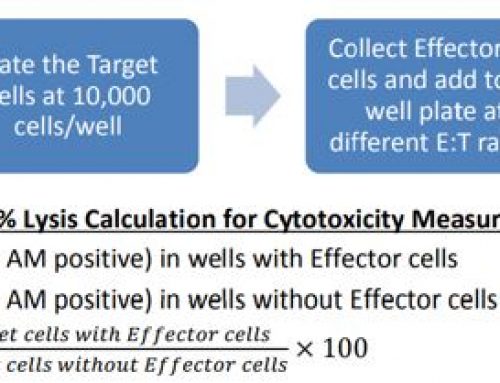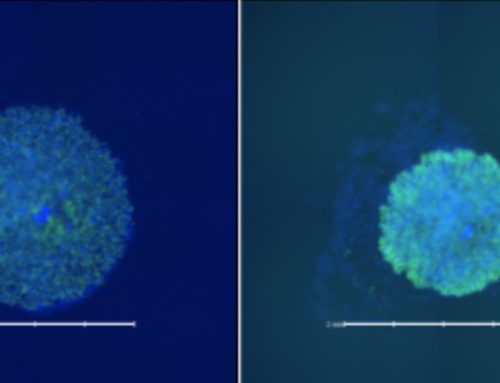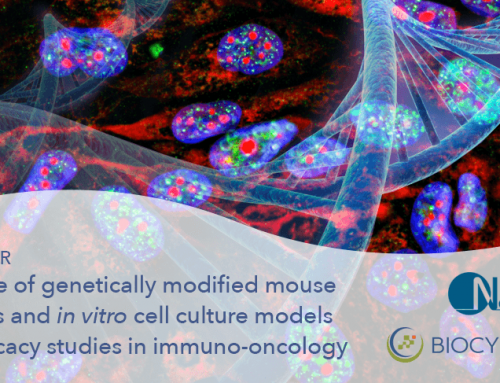Review: Unlicensed NK Cells Target Neuroblastoma Following Anti-GD2 Antibody Treatment
Author: Tarek, N., et al.
J. Clin. Invest. 2012; 122(9): 3260-3270. doi:10.1172/JCI62749.
Background: Neuroblastoma (NB) is the most common childhood extracranial solid tumor. Nearly two-thirds of diagnosed patients exhibit poor long-term survival despite aggressive treatment approaches. Treatment with monoclonal antibodies against the disialoganglioside surface antigen GD2 has resulted in lower recurrence and improved survival. The anti-GD2 mAb 3F8 utilizes antibody-dependent cell-mediated toxicity (ADCC) via myeloid and natural killer (NK) cells to kill the neuroblastoma.
Purpose: To show that unlicenced NK cells lacking KIRs (killer cell immunoglobulin-like receptors) or self-specific inhibitory receptors are more effective in killing neuroblastoma cells following anti-GD2 mAb treatment and to explain this phenomenon.
Methods: NK cell surface marker expression and population percentages were determined by multicolor flow cytometry. In vitro activity of unlicensed and licensed NK cells from normal individuals was evaluated in response to NB cell lines in the presence or absence of 3F8 antibody based on CD107 mobilization. IFNg production by NK cells was also evaluated following incubation with NB cells and 3F8 antibody.
Results: When encountering target cells with HLA class I expression, unlicensed NK cells are the primary mediators of ADCC. NB patients undergoing anti-GD2 antibody treatment who lack one or more HLA ligand for their inhibitory KIRs respond better to treatment, have lower rates of relapse, and survive longer. In NB patients treated with 3F8, both activation of unlicensed NK cells and selective inhibition of licensed NK cells are contributing factors.
Findings of Note: To evade NK cell detection, neuroblastoma cells exhibit poor expression of NK-activating ligands MICA, MICB, and ULBPs. In addition, they express the 4Ig-B7-H3 molecule, a potent NK inhibitor. Cytokines released by activated NK cells induced HLA class I (self-antigen) expression on NB cells.
Author’s Conclusion: Use of antibodies to block inhibitory KIRs could restore function to licensed NK cells interacting with cancer cells expressing HLA class I (self) antigens. Activation of unlicensed NK cells plays an important role in effective treatment of many types of cancer. KLA and HLA genotypes can be used as prognostic marker in NB patients receiving antibody immunotherapy.
Reviewer’s Comments: This is an interesting example of how increased understanding of the immune system, cell function, and antigen-receptor interactions is enabling researchers to develop therapeutics that enable the body’s own systems to more effectively fight disease. These findings combined with enhanced procedures for NK cell culture may enable production and transplantation of NK cells designed to be more effective in treating various types of cancer.






Leave A Comment